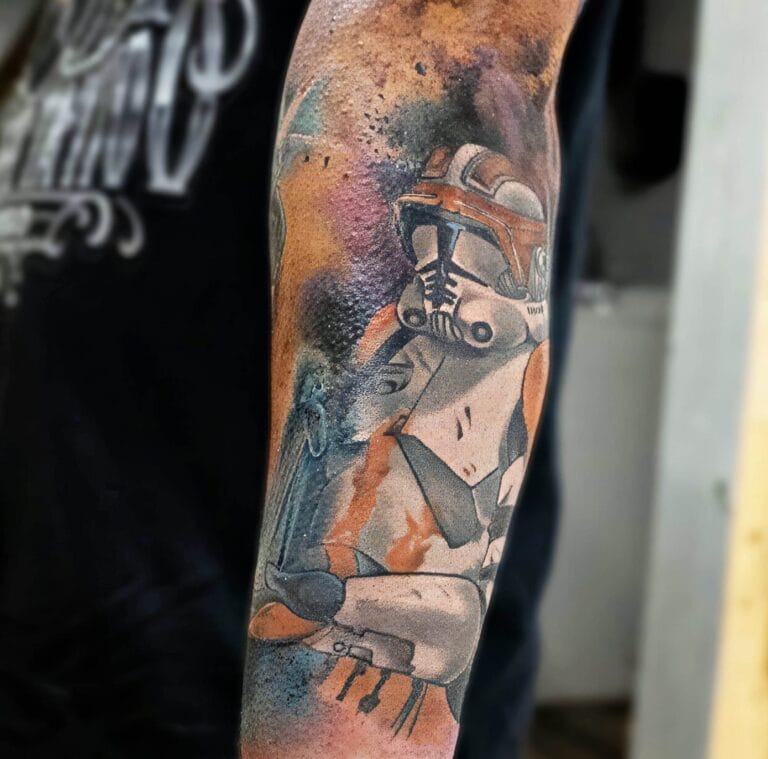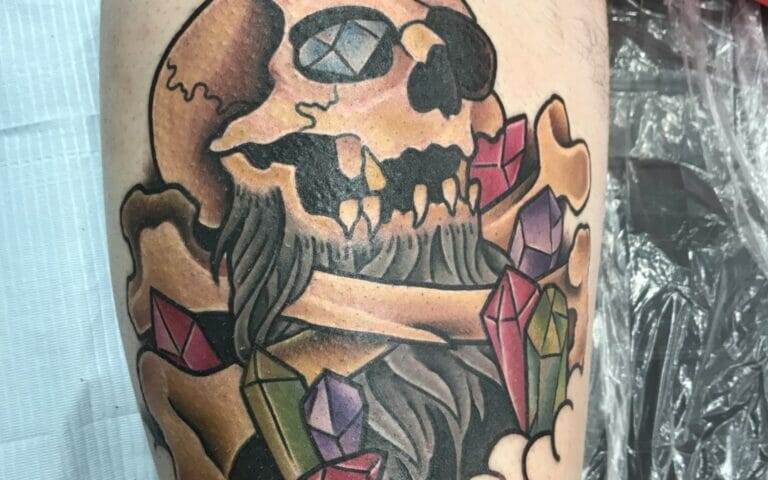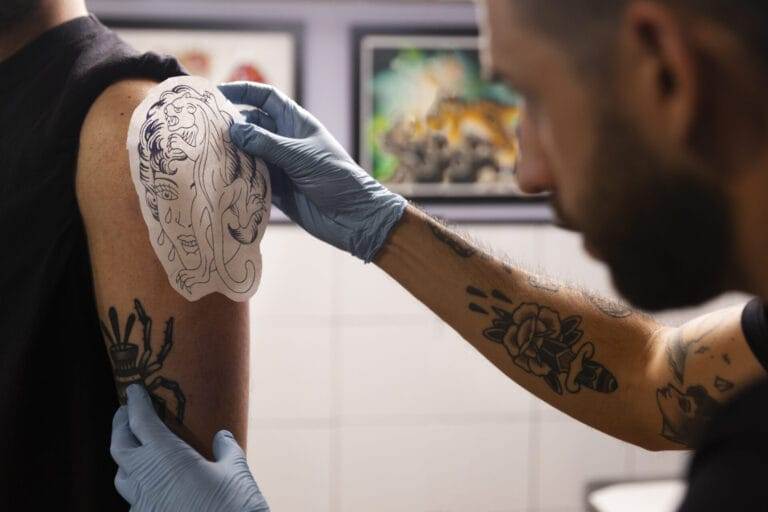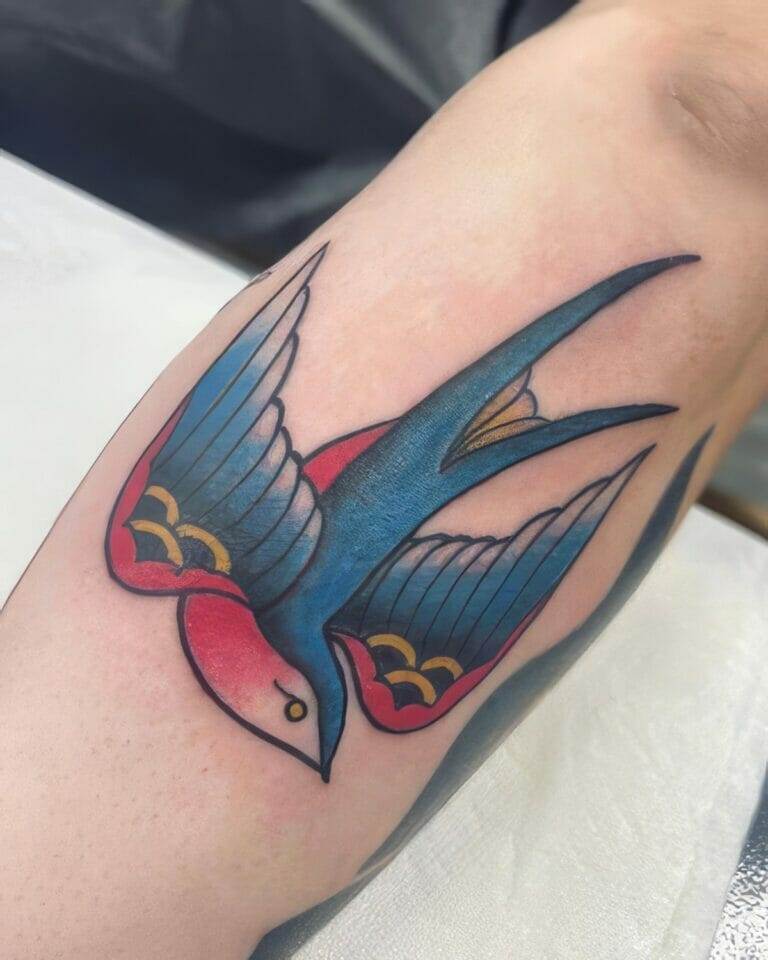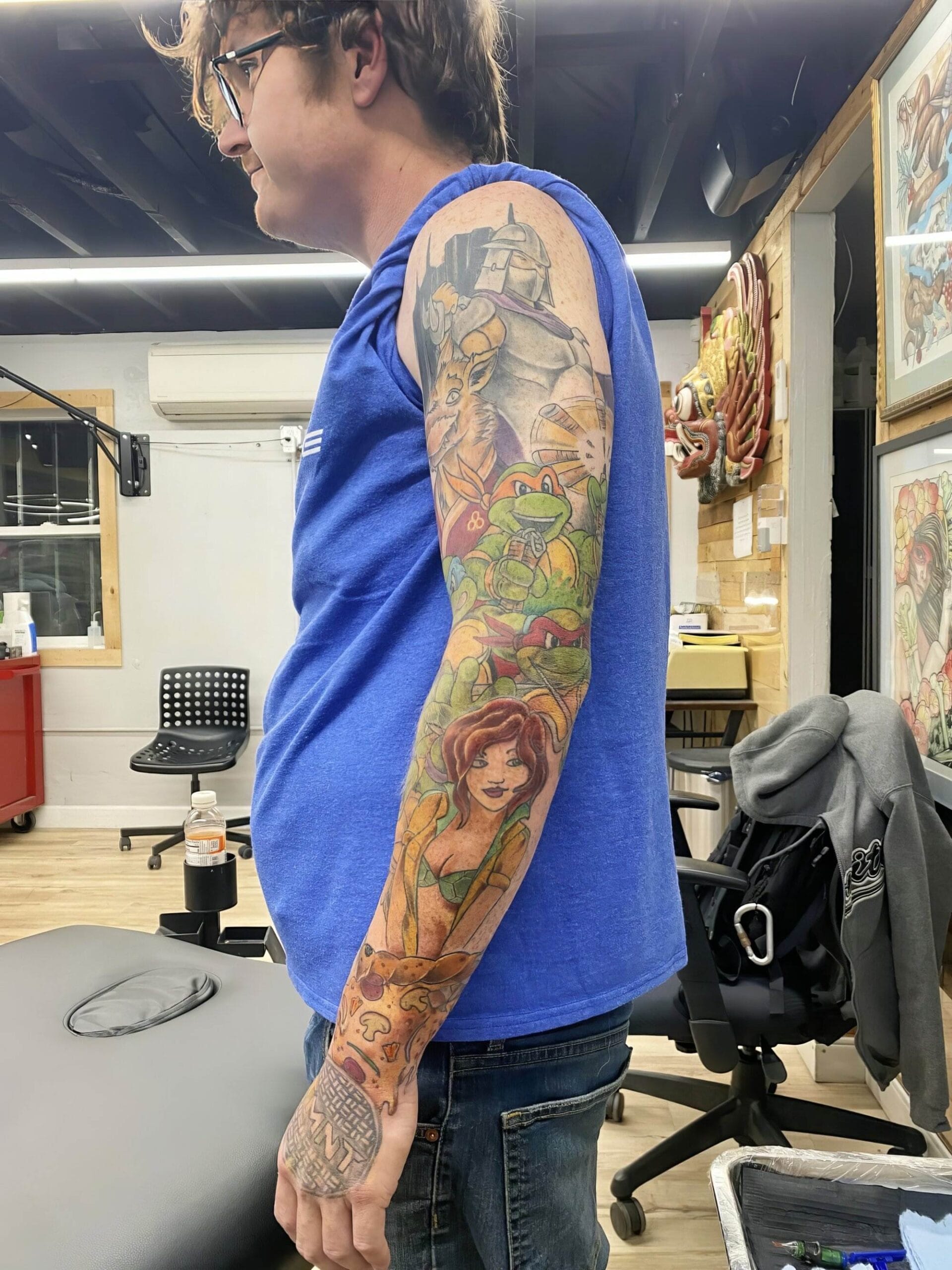
The art of tattooing has a rich and varied history that stretches back thousands of years, with portrait tattoos being one of the most compelling forms of this ancient practice. In ancient civilizations, such as those in Egypt and Greece, tattoos were often used to signify status, achievements, or even religious beliefs. Portrait tattoos, in particular, served as a means of immortalizing revered figures, whether they were gods, leaders, or loved ones.
The Egyptians, for instance, adorned their bodies with intricate designs that depicted deities and pharaohs, believing that these images would provide protection and favor in the afterlife. As time progressed, the significance of portrait tattoos evolved. In the 18th and 19th centuries, sailors and soldiers began to adopt this form of body art as a way to commemorate their loved ones or significant life events.
The portraits often depicted family members or romantic partners, serving as a constant reminder of home while they were away at sea or on the battlefield. This trend laid the groundwork for modern portrait tattoos, which continue to be a popular choice among individuals seeking to express their personal stories and connections through art on their skin.
Key Takeaways
- Portrait tattoos have a rich history dating back to ancient civilizations, with modern trends reflecting a continued fascination with capturing lifelike images on the body.
- When choosing an artist for your portrait tattoo, it’s crucial to find a skilled and experienced professional who specializes in realistic portraiture and has a strong portfolio of previous work.
- Reference images play a vital role in ensuring the accuracy and lifelike detail of your portrait tattoo, so it’s important to provide clear, high-quality photos for the artist to work from.
- Understanding the technical aspects of portrait tattoos, such as ink selection, needle techniques, and skin tone matching, is essential for achieving a realistic and long-lasting result.
- Proper care and maintenance are crucial for preserving the integrity of your portrait tattoo, including protecting it from sun exposure and using moisturizing lotions to keep the skin healthy.
Choosing the Right Artist for Your Portrait Tattoo: Finding a Skilled and Experienced Professional
What to Look for in a Tattoo Artist
A skilled artist will not only have a strong portfolio showcasing their work but will also possess a deep understanding of human anatomy and facial features. When searching for an artist, it is essential to look for someone who specializes in portraiture and has a proven track record of creating lifelike representations.
Technical Skills and Communication
This specialization ensures that the artist is familiar with the nuances of shading, line work, and color blending necessary to achieve realistic results. In addition to technical skills, it is important to consider the artist’s ability to communicate effectively. A good artist will take the time to understand your vision and preferences, offering suggestions based on their expertise while respecting your ideas.
Establishing a Collaborative Relationship
Engaging in an open dialogue about your expectations can help establish a collaborative relationship that ultimately leads to a more satisfying tattoo experience. Furthermore, reading reviews and testimonials from previous clients can provide valuable insights into an artist’s professionalism and reliability.
The Importance of Reference Images: Ensuring Accuracy and Lifelike Detail in Your Portrait Tattoo
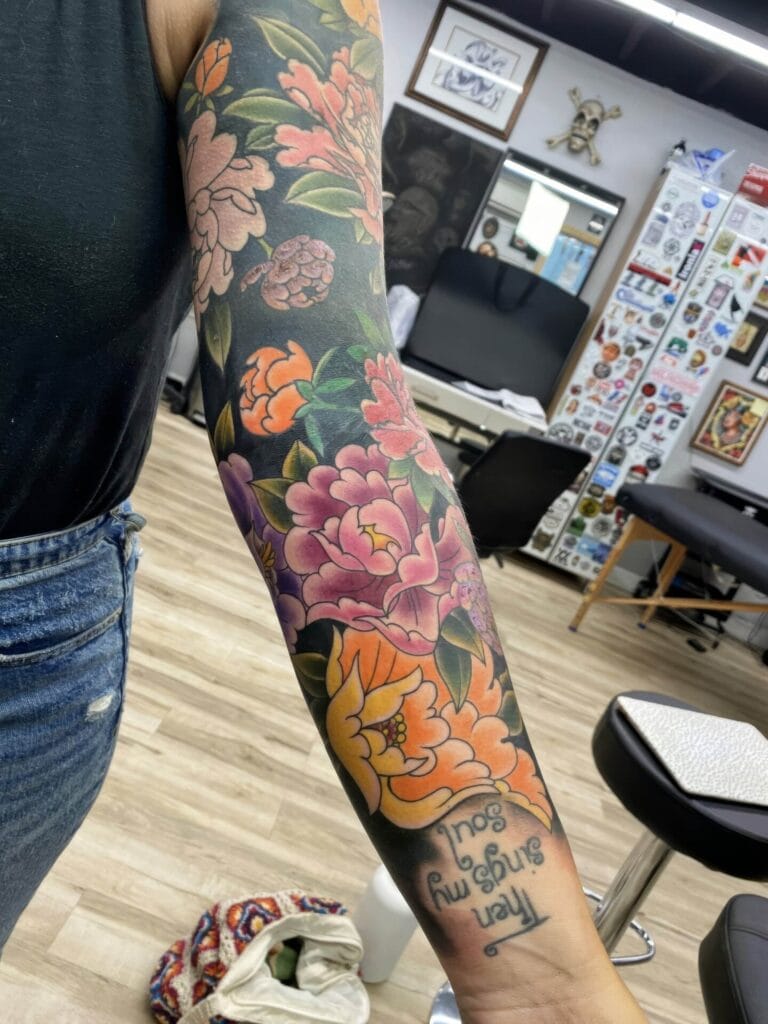
Reference images play a pivotal role in the creation of portrait tattoos, as they serve as the foundation for achieving accuracy and detail. When preparing for your tattoo session, it is essential to gather high-quality images that capture the essence of the subject you wish to immortalize. Whether it’s a beloved family member, a cherished pet, or a famous figure, having clear and detailed reference photos allows the artist to study facial features, expressions, and unique characteristics that contribute to a lifelike representation.
Moreover, providing multiple angles and expressions can enhance the artist’s understanding of the subject. This comprehensive approach enables them to capture not just the physical likeness but also the personality and spirit of the individual being portrayed. The more information you can provide through reference images, the better equipped your artist will be to create a portrait tattoo that resonates with you on a personal level.
Understanding the Technical Aspects of Portrait Tattoos: Ink, Needle Techniques, and Skin Tone Matching
The technical aspects of portrait tattoos are crucial for achieving stunning results that stand the test of time. One of the primary considerations is the type of ink used; high-quality pigments are essential for vibrant colors and longevity. Artists often choose inks that are specifically formulated for portrait work, as these inks provide better saturation and fade resistance over time.
Additionally, understanding how different inks interact with various skin tones is vital for achieving realistic skin tones in the tattoo. Needle techniques also play a significant role in creating depth and dimension in portrait tattoos. Artists may employ various needle configurations to achieve different effects; for instance, using finer needles for detailed line work while opting for larger needles for shading can create a more dynamic appearance.
Furthermore, mastering techniques such as stippling or blending allows artists to replicate the subtleties of light and shadow found in real-life portraits. This technical knowledge is essential for producing tattoos that not only look realistic but also age gracefully over time.
Maintaining the Integrity of the Portrait: Tips for Caring for and Preserving Your Tattoo
Once you’ve received your portrait tattoo, proper aftercare is essential for maintaining its integrity and vibrancy. The healing process typically takes several weeks, during which time it is crucial to follow your artist’s aftercare instructions diligently. Keeping the tattoo clean and moisturized helps prevent infection and promotes optimal healing.
Using fragrance-free soaps and specialized tattoo ointments can aid in this process while minimizing irritation. In addition to immediate aftercare, long-term maintenance is vital for preserving the quality of your portrait tattoo. Protecting your skin from excessive sun exposure is one of the most effective ways to prevent fading.
Applying sunscreen with a high SPF whenever you’re outdoors can help shield your tattoo from harmful UV rays. Regular moisturizing also plays a key role in keeping your skin healthy and ensuring that your tattoo remains vibrant for years to come.
Portrait Tattoos as a Form of Personal Expression: Symbolism and Meaning Behind the Art
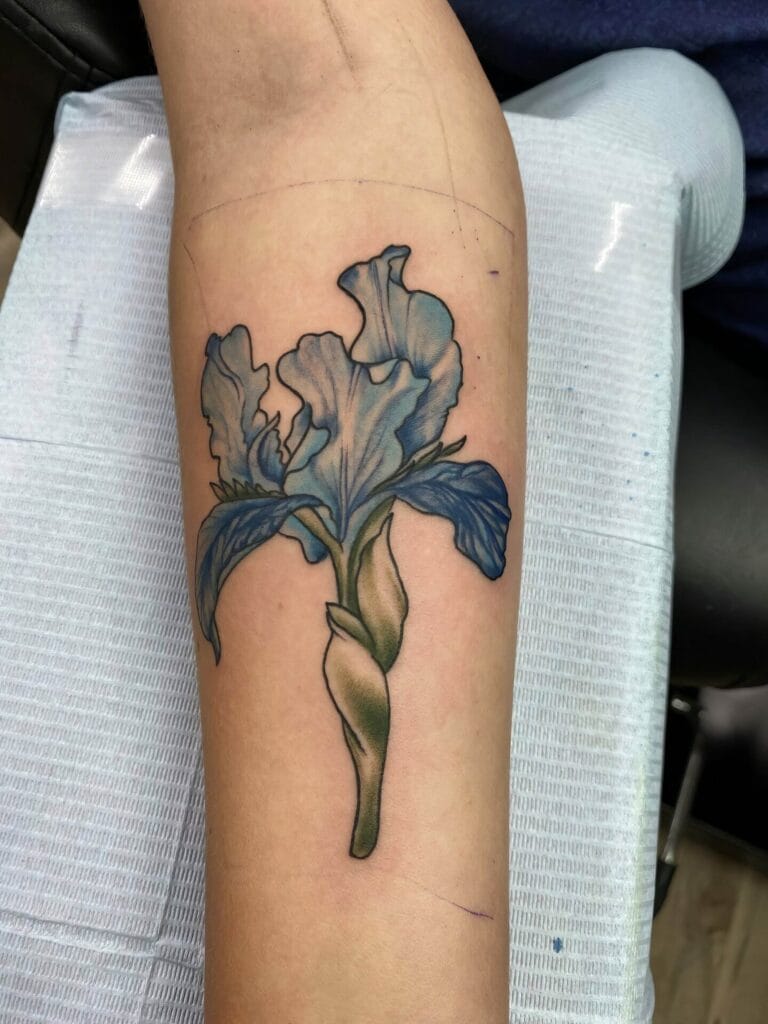
Portrait tattoos are often deeply personal expressions of love, loss, or admiration. They serve as visual narratives that encapsulate significant moments or relationships in an individual’s life. For many people, getting a portrait tattoo is not just about aesthetics; it is about honoring someone who has had a profound impact on their journey.
Whether it’s a tribute to a parent who has passed away or a celebration of a beloved pet, these tattoos carry immense emotional weight. Moreover, portrait tattoos can also reflect broader themes such as identity and heritage. For individuals seeking to connect with their cultural roots or commemorate historical figures who inspire them, portrait tattoos can serve as powerful symbols of pride and belonging.
The meanings behind these tattoos are as diverse as the individuals who wear them, making each piece a unique testament to personal stories and experiences.
Potential Challenges and Considerations: Placement, Size, and Aging of Portrait Tattoos
When considering a portrait tattoo, several challenges and considerations come into play regarding placement and size. The location on your body can significantly affect how well the details are captured; areas with more flesh may allow for larger portraits that can accommodate intricate details, while smaller areas may limit an artist’s ability to create fine lines effectively. Additionally, certain body parts may be more prone to fading or distortion over time due to factors like movement or skin elasticity.
Size is another critical factor; larger tattoos often allow for more detail but require more time and commitment during the tattooing process. Conversely, smaller portraits may sacrifice some intricacies but can be more easily concealed if desired. It’s essential to discuss these considerations with your artist to determine what will work best for your vision while taking into account how aging may affect the appearance of your tattoo over time.
The Future of Portrait Tattoos: Innovations and Trends in Capturing Lifelike Detail in Body Art
As technology continues to advance, so too does the world of tattooing, particularly in the realm of portrait tattoos. Innovations such as digital design tools allow artists to create more precise stencils and mock-ups before applying ink to skin. This technology enables greater accuracy in capturing likenesses and allows clients to visualize their tattoos before committing fully.
Additionally, advancements in ink formulations are leading to pigments that offer improved vibrancy and longevity. Emerging trends also reflect a growing interest in combining traditional techniques with modern aesthetics. Artists are increasingly experimenting with styles that blend realism with abstract elements or incorporating color theory into their work for added depth.
As societal perceptions of tattoos continue to evolve, portrait tattoos are becoming more widely accepted as legitimate forms of artistic expression rather than mere body modifications. This shift opens up new avenues for creativity and innovation within this timeless art form. In conclusion, portrait tattoos represent a fascinating intersection of history, artistry, and personal expression.
From their ancient origins to modern innovations, these tattoos continue to captivate individuals seeking meaningful ways to commemorate their stories and relationships through body art. By understanding the intricacies involved in choosing an artist, preparing reference images, mastering technical aspects, maintaining care, navigating challenges, and embracing future trends, individuals can embark on their journey toward creating a stunning portrait tattoo that resonates deeply with their identity.
FAQs
What are portrait tattoos?
Portrait tattoos are a form of body art that involves creating a realistic depiction of a person’s face on the skin using tattoo ink. These tattoos aim to capture the likeness and details of the individual, often resembling a photograph.
How are portrait tattoos created?
Portrait tattoos are created by skilled tattoo artists who specialize in realism and portraiture. They use reference photos of the person to accurately capture their features, such as their eyes, nose, mouth, and any unique characteristics. The artist then uses shading and fine lines to create a lifelike representation on the skin.
What makes a good portrait tattoo?
A good portrait tattoo is one that accurately captures the likeness and personality of the individual. It should have realistic details, such as skin texture, hair, and facial expressions. The tattoo should also be well-proportioned and placed on the body to enhance the overall effect.
What are the challenges of creating portrait tattoos?
Creating portrait tattoos requires a high level of skill and attention to detail. Artists must be able to accurately replicate the features of the individual, including subtle nuances and expressions. Additionally, the skin presents its own challenges, such as texture and elasticity, which can affect the final result.
How long do portrait tattoos last?
The longevity of a portrait tattoo depends on various factors, including the quality of the ink, the skill of the artist, and the aftercare provided by the individual. With proper care and maintenance, portrait tattoos can last a lifetime without significant fading or distortion.

